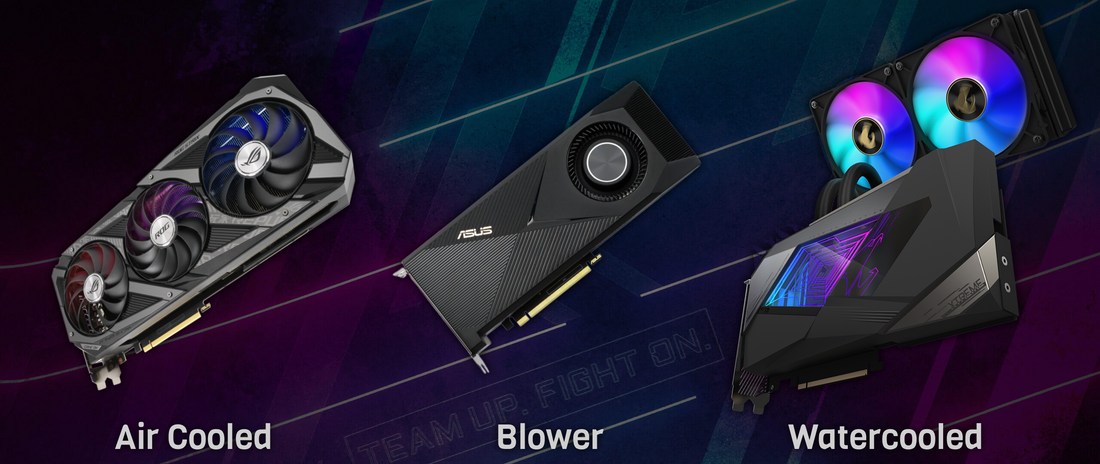
Anatomy of a GPU: A Definitive Guide to Lines, Tiers, and the Real Difference Between Graphics Cards
Anatomy of a GPU: Beyond the Name
Hey everyone! Choosing a new graphics card can be as confusing as trying to understand the story of Kingdom Hearts . You decide you want an "RTX 3090," but suddenly you're faced with dozens of models from brands like MSI, ASUS, and Gigabyte, each with completely different prices and designs. If they're all "RTX 3090s," why all the difference? The answer lies in the card's "anatomy." Let's dissect this monster piece by piece and understand what really matters!
The Heart of the Graphics Card: GPU vs. AIB (The "Engine" and the Car)
The first thing you need to understand is the difference between a GPU and a graphics card. Think of NVIDIA as a manufacturer of high-performance engines. The "engine" is the GPU chip, the brain that performs all the graphics calculations. But an engine alone won't get you anywhere, right? That's where partner manufacturers, the AIBs (Add-in-Board partners), come in.

AIBs are like car manufacturers. NVIDIA delivers the engine (the chip) to ASUS, MSI, Gigabyte, etc., and they build the rest of the car: the chassis (PCB), the cooling system, the fuel system (VRM), and the external design. That's why an MSI VENTUS and an ASUS ROG Strix, even having the same chip, are completely different "cars," with distinct performance, noise, and price. It's this competition between AIBs that gives us so many options!
1. The Pillars of Differentiation: What Really Changes?
The differences between video card models boil down to three main engineering pillars: the cooling system, the VRM, and the PCB. How each manufacturer invests in these pillars defines the quality and "Tier" of the card.
1.1. The Cooler: The Battle Against the Heat
A powerful GPU generates a lot of heat, and the cooler is the hero that fights against it. A superior cooler not only keeps the card cool, but allows it to maintain high and stable performance, avoiding the dreaded thermal throttling (when the card reduces performance to avoid overheating). There are three types:
- Open-Air Cooler: The most common type. It has a large heatsink and 2 or 3 fans. It's efficient for most PCs, but it blows hot air inside the case.
- Air Cooler (Blower): An older design, with a turbine-type fan that expels hot air. Good for small cases or cases with multiple cards, but generally noisier.
- Liquid Cooling (AIO): The most premium solution. It uses a radiator and a liquid to dissipate heat, resulting in very low temperatures, less noise, and the greatest potential for overclocking.

1.2. The VRM: The "Fuel" of the Board
The VRM (Voltage Regulator Module) is the system that transforms the power from the power supply into a stable voltage for the GPU. Having a robust VRM, with more "power phases," is crucial for:
- Overclocking: A powerful VRM can deliver the extra power needed for the GPU to run safely at higher frequencies.
- Stability: Maintains "clean" energy, preventing jams and instability, especially under heavy load.
- Longevity: By distributing the load among more components, the VRM heats up less and lasts longer.
1.3. The PCB: The Invisible Foundation
The PCB (Printed Circuit Board) is the "backbone" of the board, where everything is assembled. Cheaper boards use reference PCBs, which are functional. Premium boards (Tier S+) use custom PCBs, designed to accommodate larger VRMs, use higher quality materials, and optimize power flow, ensuring reliability and top-tier performance.

2. Silicon Lottery and Ranking (Binning)
Not all GPU chips are created equal. During manufacturing, some are more "lucky," achieving higher clock speeds with less power. High-end graphics card manufacturers test these chips and select the best for their most expensive models (the "flagships"). This process, called binning , allows them to offer higher factory overclocks and guarantee elite performance. That's why a top-of-the-line card is more expensive: it not only has a better cooler and VRM, but also a hand-picked "premium" chip.
3. Tier Guide: Finding the Right License Plate for You
To help you choose, we've created a Tier table that summarizes the profile of each type of graphics card. Think of the Tiers as character classes, each with its own strengths and weaknesses:
Table: Comparative Summary of RTX 3090 Tiers
| Tier | Design Philosophy | Example | Who is it for? |
|---|---|---|---|
| Tier B | Specific Niche | Gigabyte/ASUS Turbo | Professionals who use multiple GPUs in the same PC (workstations, servers). |
| Tier A | Cost-benefit | MSI VENTUS 3X | Gamer who wants base GPU performance at the lowest possible price. |
| Tier S | Premium Balance | ASUS TUF Gaming | An enthusiast seeking silence, low temperatures, and high-quality construction. |
| Tier S+ | Pinnacle of Engineering | AORUS XTREME WATERFORCE | A competitive and enthusiastic overclocker seeking absolute, maximum performance without limits. |

4. How do specific brands fit into the tiers?
Each manufacturer has its own product lines that fit into these tiers. Knowing the brand hierarchy helps you understand what to expect from each model.
Table: Brands and Product Lines by Tier
| Tier | Brands and Product Lines |
|---|---|
| Tier B (Niche / Blower) | ASUS Turbo, Gigabyte Turbo, MSI Aero, PNY Blower, Zotac Blower. |
| Tier A (Essential / Cost-Effective) | ASUS Dual/Phoenix, Gigabyte Eagle/Windforce, MSI Ventus/Mech, Galax, Zotac Twin Edge. |
| Tier S (Premium Balance) | ASUS TUF Gaming, Gigabyte Gaming OC/Vision, MSI Gaming X Trio, Galax EX/SG, Zotac Trinity/AMP. |
| Tier S+ (Apex / Extreme Enthusiast) | ASUS ROG Strix/Matrix/LC, Aorus Master/Xtreme/Waterforce, MSI Suprim/Suprim Liquid, Galax HOF. |
Conclusion: The Value Is in the Details
By understanding the difference between a GPU chip and a complete graphics card, and how each component (cooler, VRM, PCB) and the chip selection strategy influence the final result, you go from being a passive spectator to an informed architect of your own PC experience. The right choice isn't just about which card has the most FPS, but about which one perfectly aligns with your budget, your gaming style, and your priorities. The choice is yours, and now you have the tools to make the best one!
TaskRevolution | CNPJ MEI under validation | Brasília - Federal District
